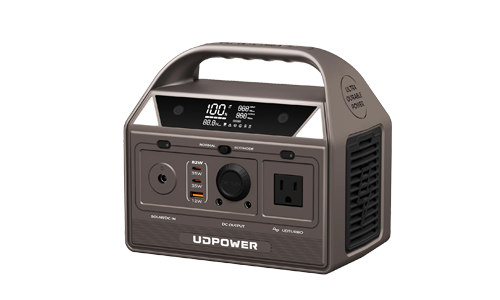

All-in-one battery and power unit converters: easily switch between mAh, Ah, Wh, V, W, A, kW, kVA, and HP, with practical examples and tips.
Convert milliamp-hours (mAh) and voltage (V) into watt-hours (Wh) to estimate energy capacity.
Formula: Wh = (mAh × V) / 1000
Example: 5000mAh at 3.7V = 18.5Wh
Convert watt-hours (Wh) to milliamp-hours (mAh) to estimate capacity at a specific voltage.
Formula: mAh = (Wh × 1000) / V
Example: 18.5Wh at 3.7V = 5000mAh
Convert amp-hours (Ah) and voltage (V) into watt-hours (Wh) for larger battery systems.
Formula: Wh = Ah × V
Example: 2Ah at 12V = 24Wh
Convert watt-hours (Wh) to amp-hours (Ah) to check battery discharge capacity.
Formula: Ah = Wh / V
Example: 60Wh at 12V = 5Ah
Convert watts (W) and voltage (V) into current (A) for load analysis.
Formula: A = W / V
Example: 120W at 12V = 10A
Convert current (A) and voltage (V) into power (W) to estimate energy use.
Formula: W = A × V
Example: 2A at 5V = 10W
Convert apparent power (kVA) to real power (kW) using the power factor (PF).
Formula: kW = kVA × PF
Example: 50 kVA at PF 0.8 = 40 kW
Convert real power (kW) to apparent power (kVA) using the power factor (PF).
Formula: kVA = kW ÷ PF
Example: 40 kW at PF 0.8 = 50 kVA
Convert power (kW) to energy (kWh) based on usage time in hours.
Formula: kWh = kW × hours
Example: 2 kW for 5 hours = 10 kWh
Convert energy (kWh) to power (kW) based on usage time in hours.
Formula: kW = kWh ÷ hours
Example: 10 kWh used over 5 hours = 2 kW
Convert horsepower (HP) to watts (W) using different standards. Choose the correct HP type to match your datasheet.
Formula: W = HP × 745.7
Tip: Mechanical HP is common for motors in U.S. contexts; Metric HP (PS) is common in EU automotive specs; Boiler HP is only for steam ratings.
Convert watts (W) to horsepower (HP). Pick the same standard used by your equipment spec.
Formula: HP = W ÷ 745.7
Example: 1500 W (mechanical) ≈ 2.01 HP.
mAh indicates how much charge a battery can deliver over time and is common for small batteries. Higher mAh = longer runtime at the same voltage.
Wh measures total stored energy. It already accounts for voltage: Wh = (mAh × V) / 1000 or Wh = Ah × V.
Ah is capacity for larger packs. Multiply by voltage to get energy in Wh. Example: 100 Ah at 12.8 V ≈ 1,280 Wh.
Voltage is electrical potential. Common system “nominal” voltages: 12 V, 24 V, 48 V. Lithium cells are typically 3.2–3.7 V nominal per cell depending on chemistry.
Ampere is current flow. For DC systems, W = V × A. For AC, use W = V × A × PF.
Watt is power (rate of doing work). Energy (Wh) = Power (W) × Time (h).
Apparent power in AC systems (ignores power factor). Generators/UPS are often rated in kVA.
Real/usable power. kW = kVA × PF. Utility bills show energy in kWh, not kW.
Energy over time. 1 kWh = using 1 kW for 1 hour = 1000 Wh.
PF (0–1) shows how effectively current is converted to useful work. Many motors have PF ≈ 0.7–0.9.
They describe the same thing at different scales. 1 Ah = 1000 mAh. Use Ah for large packs (e.g., power stations), mAh for small devices.
Nominal voltage is a convenient label (e.g., 12.8 V for LiFePO₄), while actual voltage varies with state of charge, load, and temperature.
Capacity (Ah) doesn’t include voltage. Energy (Wh) = capacity × voltage. Always compare packs in Wh/kWh across different voltages.
DC: W = V × A. AC: W = V × A × PF. Low PF means more current for the same real power—important for inverter sizing.
C-rate expresses charge/discharge current relative to capacity. A 1C discharge on a 100 Ah battery is 100 A; 0.5C is 50 A.
Depth of Discharge (DoD) is how much you’ve used; State of Charge (SoC) is what remains. Many LiFePO₄ packs are rated for 80–100% DoD cycles.
LiFePO₄ typically offers longer cycle life, better thermal stability, and flatter voltage curves; NMC offers higher energy density but often fewer cycles.
Inverters are not 100% efficient (often 85–94%). There’s also idle/standby consumption. Size the battery with losses in mind.
Motors/compressors need higher short-term start (surge) power. Ensure your inverter/generator supports both surge and continuous ratings.
Series increases voltage (Wh increases with same Ah). Parallel increases Ah (Wh increases with same V). Match chemistry, age, and capacity when combining.
Undersized cables cause heat and voltage drop. Use thicker wire for high current and long runs; keep DC runs short.
Cold reduces available power; heat accelerates aging. Many LiFePO₄ packs restrict charging below ~0 °C to protect cells.
Lead-acid capacity falls at higher discharge rates. Lithium is far less affected, which is why it sustains higher loads better.
MPPT controllers harvest more energy (especially in cold/variable sun) by tracking panel V-I curves; PWM is simpler but less efficient.
The Battery Management System handles cell balancing and protects against over/under-voltage, over-current, short-circuit, and over/under-temperature.
A UPS prioritizes seamless switchover (<10–20 ms or less). An inverter/charger may have longer transfer times unless designed as UPS.
Look for certifications (e.g., UL, IEC, UN38.3 for transport). Follow manufacturer limits for charge current, discharge current, and temperature.
Horsepower (HP) is a unit of power originally defined by engineer James Watt to compare the output of steam engines to the work of draft horses. Today it is commonly used to measure the output of engines and motors.
For practical conversions, you can estimate: 1 HP ≈ 746 W ≈ 0.75 kW. This makes it easier to compare engines or motors rated in horsepower with electrical devices rated in watts or kilowatts.